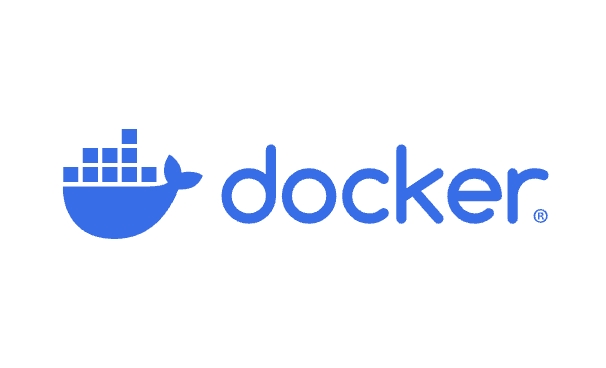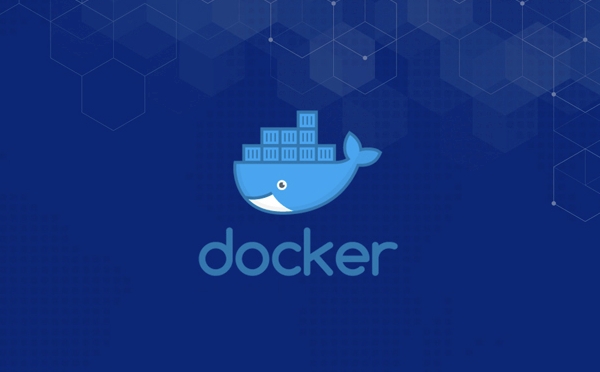Docker for Windows uses a Linux VM or WSL 2 to run containers because Windows lacks native Linux kernel features; 1) it automatically manages a lightweight Linux VM (or uses WSL 2) with Hyper-V to host the Docker daemon and containers; 2) the Docker CLI and Desktop interface forward commands to the daemon, enabling seamless interaction; 3) file sharing and port forwarding allow access to Windows files and localhost services; 4) it supports switching to Windows containers for .NET Framework or Windows-specific apps; 5) networking and file mounting are handled via virtual switches and the 9P protocol, making container management on Windows efficient and user-friendly.

Docker for Windows works by running containers on a lightweight Linux virtual machine (VM) that's managed automatically in the background, even though you're using a Windows operating system. Here's how it all fits together:

It uses a Linux VM under the hood
Even though you're on Windows, Docker relies on Linux kernel features like cgroups and namespaces to run containers. Since Windows doesn't natively support these, Docker for Windows sets up a small, hidden Linux VM using Hyper-V (Microsoft's virtualization technology).
- This VM runs a minimal Linux distribution (based on LinuxKit).
- It hosts the Docker daemon (
dockerd) and runs your containers. - The VM is managed automatically — you don’t have to set it up or maintain it manually.
You interact with Docker through the Docker CLI or Docker Desktop, which forwards commands to the daemon inside the VM.

Seamless integration with Windows
Despite the Linux backend, Docker for Windows feels native:
- Docker CLI works just like on Linux or macOS.
- Docker Desktop provides a GUI to manage containers, images, and settings.
- File sharing is set up so you can mount directories from Windows into Linux containers.
- Port forwarding lets you access services running in containers via
localhost.
For example, if you run:

docker run -d -p 8080:80 nginx
You can immediately open http://localhost:8080 in your Windows browser.
Support for Windows containers (optional)
Docker for Windows can also run native Windows containers, which use the Windows kernel instead of Linux.
- You can switch between Linux and Windows containers in Docker Desktop (right-click the tray icon → "Switch to Windows containers").
- Windows containers require Windows 10 or Windows Server and use different base images (like
mcr.microsoft.com/windows/servercore). - They’re less common for general development but useful if you're building .NET Framework apps or need Windows-specific features.
Key components behind the scenes
- Hyper-V: Powers the virtualization. Required for Docker Desktop on Windows.
-
WSL 2 (optional but recommended): Modern setups use WSL 2 (Windows Subsystem for Linux) as the backend instead of a full VM. It's faster and more integrated.
- With WSL 2, Docker runs inside a WSL 2 Linux distribution, improving performance and file system access.
- Virtual Switch: Enables networking between containers, the host, and external networks.
- File sharing: Uses 9P or Plan 9 protocol to mount Windows directories into the Linux environment securely.
What happens when you run a container?
- You type
docker run ...in PowerShell or Command Prompt. - The Docker client sends the request to the Docker daemon running in the Linux VM (or WSL 2).
- The daemon pulls the image (if needed) and starts a container using Linux kernel features.
- Ports are mapped to your Windows host; volumes are mounted from your Windows file system.
- You can access the app via localhost or manage it through Docker Desktop.
Basically, Docker for Windows bridges the gap between Windows and Linux container ecosystems. It handles the complexity of virtualization so you can focus on building and running apps. It’s not magic — it’s just smart use of VMs, WSL 2, and seamless integration.
The above is the detailed content of How does Docker for Windows work?. For more information, please follow other related articles on the PHP Chinese website!

Hot AI Tools

Undress AI Tool
Undress images for free

Undresser.AI Undress
AI-powered app for creating realistic nude photos

AI Clothes Remover
Online AI tool for removing clothes from photos.

ArtGPT
AI image generator for creative art from text prompts.

Stock Market GPT
AI powered investment research for smarter decisions

Hot Article

Hot Tools

Notepad++7.3.1
Easy-to-use and free code editor

SublimeText3 Chinese version
Chinese version, very easy to use

Zend Studio 13.0.1
Powerful PHP integrated development environment

Dreamweaver CS6
Visual web development tools

SublimeText3 Mac version
God-level code editing software (SublimeText3)
 How to set the taskbar clock to the second in win11_How to set the seconds displayed in the win11 taskbar clock
Oct 14, 2025 am 11:21 AM
How to set the taskbar clock to the second in win11_How to set the seconds displayed in the win11 taskbar clock
Oct 14, 2025 am 11:21 AM
Windows 11 can enable the taskbar clock to display seconds through settings, registry, command line, or third-party tools. 1. Turn it on in settings: Go to Personalization → Taskbar → Taskbar Behavior and turn on "Show seconds in system tray clock"; 2. Registry modification: Create a new DWORD value ShowSecondsInSystemClock under HKEY_CURRENT_USER\SOFTWARE\Microsoft\Windows\CurrentVersion\Explorer\Advanced and set it to 1; 3. Command line execution: Run PowerShell as an administrator and enter regaddHKCU\Softw
 What to do if windows11 cannot install net framework 3.5_How to fix the failure of windows11 to install .NET 3.5
Oct 14, 2025 am 11:09 AM
What to do if windows11 cannot install net framework 3.5_How to fix the failure of windows11 to install .NET 3.5
Oct 14, 2025 am 11:09 AM
First, use the DISM command to install .NET Framework 3.5 from local sources. If it fails, enable the function through the control panel, then repair the system files and reset the update service, check the group policy settings, and finally use third-party tools to assist in the repair.
 How to set up screen tearing when playing games in win11_Win11 game screen tearing repair and setting tutorial
Oct 14, 2025 am 11:18 AM
How to set up screen tearing when playing games in win11_Win11 game screen tearing repair and setting tutorial
Oct 14, 2025 am 11:18 AM
Screen tearing is caused by the graphics card frame rate being out of sync with the monitor refresh rate, which can be solved by enabling windowed optimization, turning off full-screen optimization, setting vertical sync, calibrating the refresh rate, and turning off automatic HDR.
 How to solve the green screen or black screen when playing video in edge browser_How to solve the green screen and black screen when playing video in edge browser
Oct 14, 2025 am 10:42 AM
How to solve the green screen or black screen when playing video in edge browser_How to solve the green screen and black screen when playing video in edge browser
Oct 14, 2025 am 10:42 AM
First, adjust the hardware acceleration settings, close and then restart the Edge browser; second, update or reinstall the graphics card driver to improve compatibility; then clear the GPUCache folder in the ShaderCache; and finally, reset the browser settings to eliminate abnormalities.
 How to fix my webcam not being detected in Windows?
Oct 12, 2025 am 04:29 AM
How to fix my webcam not being detected in Windows?
Oct 12, 2025 am 04:29 AM
Ifyourwebcamisn'tdetectedinWindows,trythesesteps:1.Checkcameraprivacysettingsandapppermissions.2.UpdateorreinstallwebcamdriversviaDeviceManager.3.RuntheHardwareandDevicestroubleshooter.4.Testthecameraindifferentapps.5.EnsurethewebcamisenabledinBIOS/U
 What to do if win10 printer connection error 0x00000709_Win10 printer connection error repair method
Oct 13, 2025 am 11:44 AM
What to do if win10 printer connection error 0x00000709_Win10 printer connection error repair method
Oct 13, 2025 am 11:44 AM
Error code 0x00000709 usually causes shared printer connection failure due to insufficient permissions, system update conflicts, or service abnormalities. You can use professional tools to repair it with one click, or solve this problem by modifying registry permissions, uninstalling specific updates such as KB5005569, restarting PrintSpooler and related services, and adding Windows credentials (such as IP address and guest account).
 How to clear dns cache in windows_detailed explanation of dns cache refresh command
Oct 13, 2025 am 11:45 AM
How to clear dns cache in windows_detailed explanation of dns cache refresh command
Oct 13, 2025 am 11:45 AM
1. Refreshing the DNS cache can solve the problem of web pages failing to load or domain name resolution errors. 2. Execute ipconfig/flushdns through the command prompt to clear the system DNS cache. 3. Run the command prompt as an administrator and restart the DNSClient service (netstopdnscache and netstartdnscache) to restore service functions. 4. Visit chrome://net-internals/#dns in the Chrome browser and click "Clearhostcache" to clear the browser's independent DNS cache. 5. Changing the DNS server to 8.8.8.8 and 8.8.4.4 can improve the resolution speed and accuracy.
 How to set the default audio device in Windows_How to set the default audio playback and recording device in Windows
Oct 14, 2025 am 11:24 AM
How to set the default audio device in Windows_How to set the default audio playback and recording device in Windows
Oct 14, 2025 am 11:24 AM
First, change the default playback device through the system sound settings, right-click the volume icon and select Sound Settings, select the target device in the output options and test; then set the default microphone in the recording tab of the sound control panel, right-click the required device and set it as the default; you can also use third-party tools such as AudioSwitch to quickly switch input and output devices; advanced users can use the nircmd command line tool to achieve automatic switching, and use the setdefaultsounddevice command to specify the playback or recording device.




